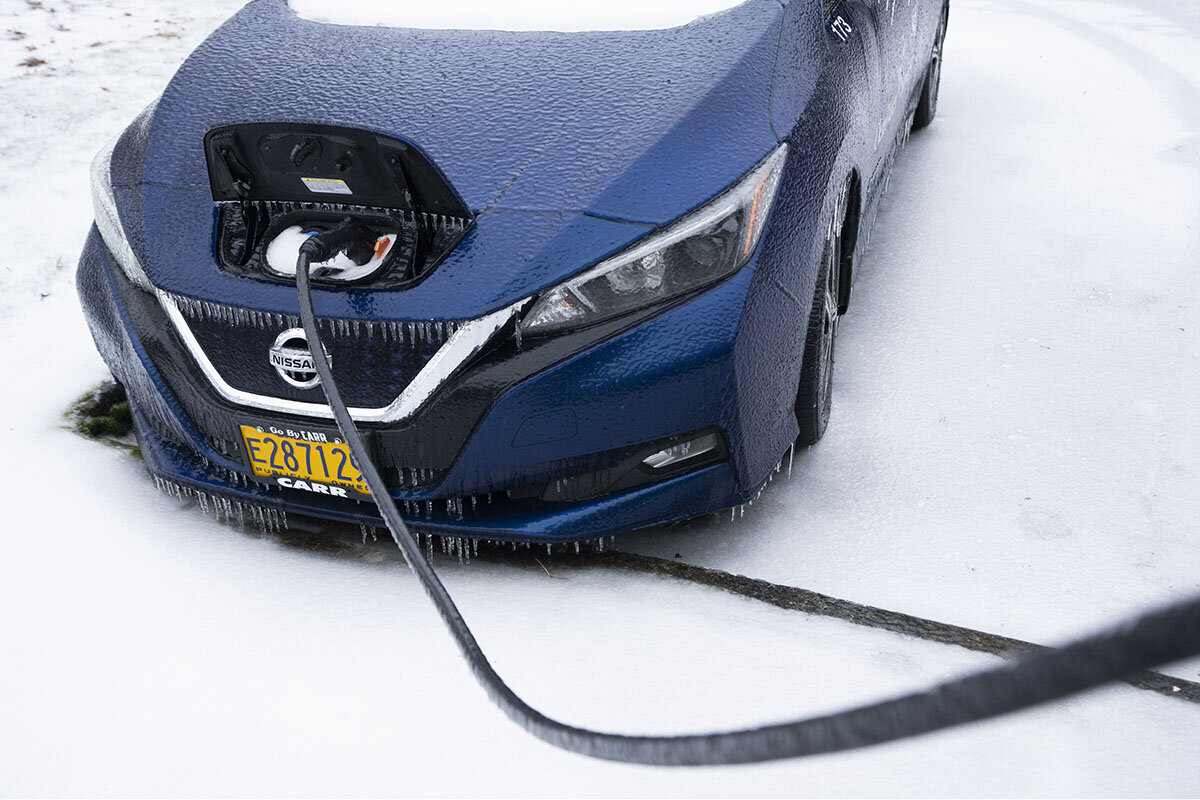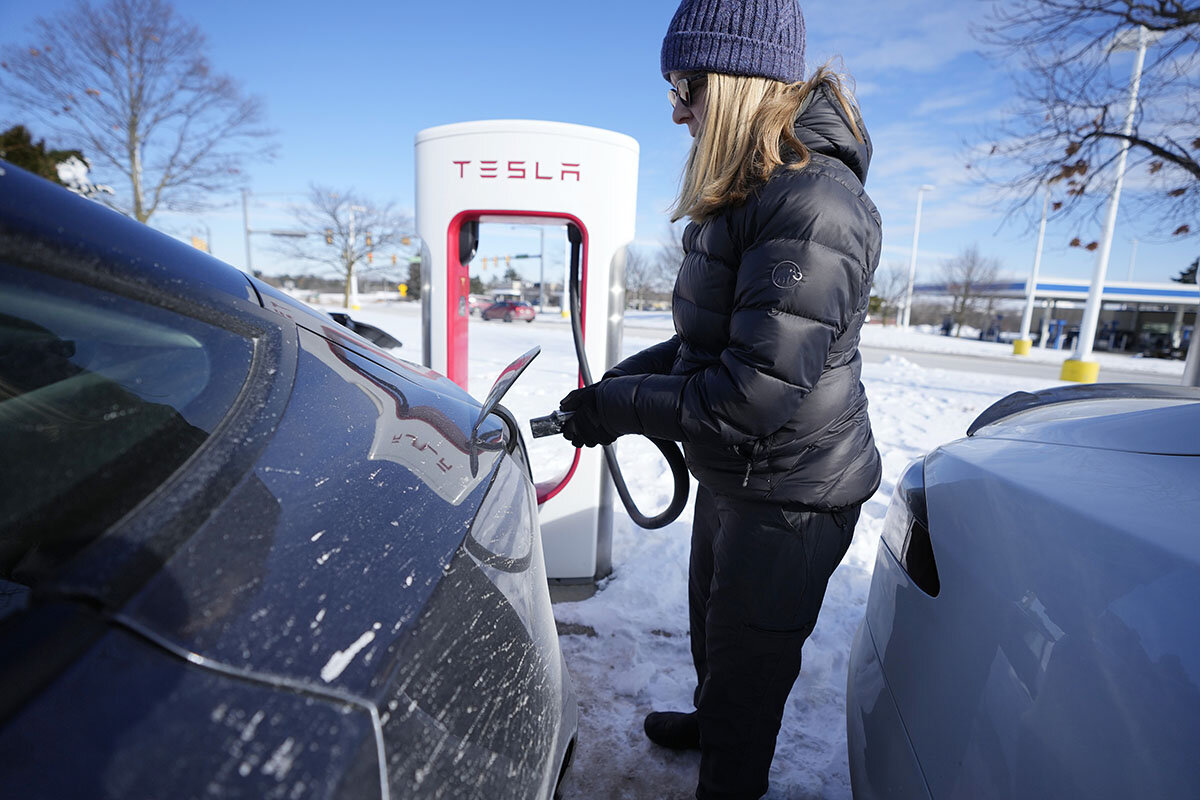Freeze puts heat on EV carmakers to improve batteries
Loading...
At a time when automakers are reducing sales estimates for electric vehicles in the United States, they didn’t need this: an arctic blast in Chicago last week that rendered some EVs inoperable before they could be recharged.
As temperatures plunged, drivers at public charging stations found the process took far longer than usual and sometimes didn’t work at all. As delays grew, so did lines of cars waiting to charge. Some ran out of juice before they could plug in, forcing owners to abandon their cars – not exactly a ringing endorsement of the technology.
“The electric [vehicle] industry took a pretty big hit just in reliability this week,” says Miles Galfer, a data-solution architect and Tesla owner in suburban Chicago.
Why We Wrote This
Last week’s freeze left many electric vehicle owners stuck in long battery-charging lines. EV drivers need a solution soon, or they may get left, literally, out in the cold.
Already racing to make EVs go farther on a single charge, auto companies now face the pressing challenge of making their EVs more winter-friendly. That means making batteries more resistant to the cold and expanding the public charging network, especially in cities with frigid weather where EV owners living in condos or apartment buildings don’t have access to their own dedicated chargers.
On the battery front, manufacturers have made much progress, scientists say, but more needs to be done.
“Low temperature is definitely on people’s radar,” says Neil Dasgupta, a mechanical engineering professor and deputy director of the Energy Frontier Research Center at the University of Michigan in Ann Arbor. In the cold, chemical reactions naturally slow down, making it harder for batteries to hold a charge. “Batteries will continue to get better in the coming years,’’ he says.
One reason for such optimism is that it’s not just EV companies pouring money into cold-weather battery research, he says. NASA has to ensure its battery packs can operate and recharge in extreme conditions on Mars and the moon. The Defense Department needs the same level of reliability for its equipment in arctic conditions.
The challenge for EV makers is to ensure the technology is cheap enough to incorporate in mass-market cars.
Researchers are working on various solutions. One of the most popular is preheating a battery so that it’s at the optimum temperature to charge quickly when connected to a charger. Teslas, for example, automatically precondition their batteries when they detect a driver planning to take a ride or charge up.
The problem is that at really low temperatures, this can take a long time. To meet this challenge, Chao-Yang Wang at Penn State University has invented a technology that can heat up a battery from minus 60 degrees Fahrenheit – and fast-charge the battery to 80% of its capacity – all in less than 10 minutes. He demonstrated this technology on more than 400 electric buses at the Beijing Winter Olympics in 2022 and formed a company to commercialize it.
But at best, it would take two-to-three years for that technology to find its way into production EVs, he says. “Adopting a new technology in the auto industry is notoriously slow.”
Another challenge: Preheating the battery takes energy. That’s not a problem when cars are plugged in. But for the growing number of EV owners living in condos or apartment buildings who don’t have a dedicated charger, that can pose problems, especially in cold weather when the battery is low.
That’s what happened last week in Chicago, especially for EV owners dependent on the public charging network.
“I’ve never had a problem waiting for a charging spot,” says Jim Bowler, a retired tech executive and Tesla owner. “That changed this winter.”
For the first two years he owned his Model 3, he lived in Chicago’s suburbs, and winters posed little problem. He had a garage and his own charger. But three years ago, he and his wife moved downtown to a mid-rise condominium building with limited EV charging options in the area. On his way to jury duty in late November, during the city’s first subzero cold spell, he stopped at a Tesla Supercharger station and had to wait in line – a first.
It was only a 10-minute wait, hardly the hour-plus delays some Chicago EV owners reported earlier this month, he says. But “that occurrence was a little bit of a wake-up call to me, saying: We’re hitting that inflection point where charging infrastructure is not keeping up with EV adoption.”
In his condo building alone, the number of Teslas has roughly doubled in three years, he adds. He’s on a committee looking into installing chargers, but that would cost hundreds of thousands of dollars.
With conventional cars, “you can leave them out in the cold and they pick up right where they left off,” Mr. Bowler says. “It’s not true with EVs. You need to think differently.”






